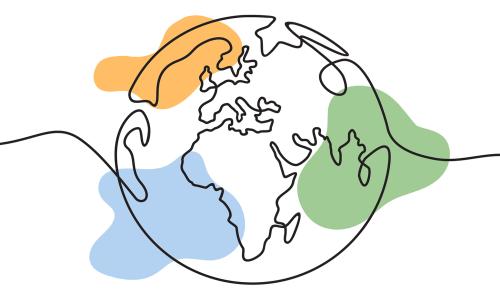Introduction
There has been a lot of talk lately about climate change and displacement. Predictions have been made that millions of people – perhaps a billion people – will be displaced because of climate change in the coming years[1]. The terms being used for those displaced by environmental factors vary. Some scholars and policy-makers refer to ‘environmental refugees’[2] which is in turn criticized by others (particularly by those coming from a refugee background.)[3] Anke Strauss of the International Organization for Migration predicts that by 2010 – 3 years from now – we’ll see an additional 50 million ‘environmental migrants’ which she defines as “persons or groups of persons who, because of sudden or progressive changes in the environment affecting adversely their livelihoods, have to move from their habitual homes to temporary or durable new homes, either within their country or abroad.”[4] The 2006 Stern Review by the UK government refers to permanently displaced “climate refugees” while the Intergovernmental Panel on Climate Change refers to ‘climate change refugees” or just “refugees.” The issue of climate change and displacement has become a popular issue in the public debates with major conferences organized on the issue, including this year’s International Conference of the Red Cross and Red Crescent in November 2007.[5] More will certainly be written about these connections in the coming years.
Many of those who are writing about climate change and displacement are not from the traditional humanitarian community where distinctions between refugees, internally displaced persons, and migrants are generally well-understood. Rather, many from the environmental community are raising the alarm about potential large-scale displacement due to climate change – perhaps as a way of drawing attention to the urgency of the situation and mobilizing governments to take action. Some of the articles about environmentally-induced displacement seem to add a security ‘scare factor’ – if Western governments don’t control their emissions, they may be faced with hundreds of millions of migrants seeking entry to their territory. Or as Archbishop Desmond Tutu said, “In the long run, the problems of the poor will arrive at the doorstep of the wealthy, as the climate crisis gives way to despair, anger and collective security threats.”[6]
In my presentation today, I would like to do three things:
- briefly review what we know about climate change
- consider alternative ways that climate change relates to environmental factors which in turn influence displacement, and
- discuss some of the problems with the current debate on climate change’s impact on displacement.
This is not a definitive study, but rather a work in progress. Your comments and suggestions are most welcome and indeed, most needed.
[1]Human tide: the real migration crisis; Christian Aid report, May 2007, p. 5. Accessed online November 26, 2007; http://www.christianaid.org.uk/Images/human_tide3__tcm15-23335.pdf
[2]While the term was used in the 1970s by the World Watch Institute, it was first publicly used in 1985 by Essam El-Hinnawi, Environmental Refugees. UNEP: Nairobi. It is also frequently associated with Jodi Jacobson’s, Environmental Refugees: a Yardstick of Habitability. World Watch Paper, no. 86, Washington, DC: World Watch Institute, 1988.
[3]See for example, Richard Black, “Environmental Refugees: myth or reality?” New Issues in Refugee Research, UNHCR, Working Paper no. 34, March 2001.
[4] Anke Strauss, Address to the High Level Segment of the Fifteenth Session of the Commission on Sustainable Development, 5 September 2007.
[5]http://www.icrc.org/Web/eng/siteeng0.nsf/htmlall/30-international-conference-daily-bulletin-271107/$File/Bulletin-IC-EN-7_LR.pdf Also see for example, International Organization for Migration, Environmentally-Induced Population Displacements and Environmental Impacts Resulting from Mass Migration. International Symposium, Geneva, April 2006 organized by IOM, together with UNHCR and the Refugee Policy Group. See also the UN Development Program’s Human Development Report 2007/08 “Fighting Climate Change: Human Solidarity in a Divided World,” New York: UNDP, 2007. http://hdr.undp.org/en/media/hdr_20072008_en_complete.pdf
[6] http://www.alertnet.org/thenews/newsdesk/N27495757.htm
The Brookings Institution is committed to quality, independence, and impact.
We are supported by a diverse array of funders. In line with our values and policies, each Brookings publication represents the sole views of its author(s).



Commentary
Making Sense of Climate Change, Natural Disasters, and Displacement: A Work in Progress
December 14, 2007